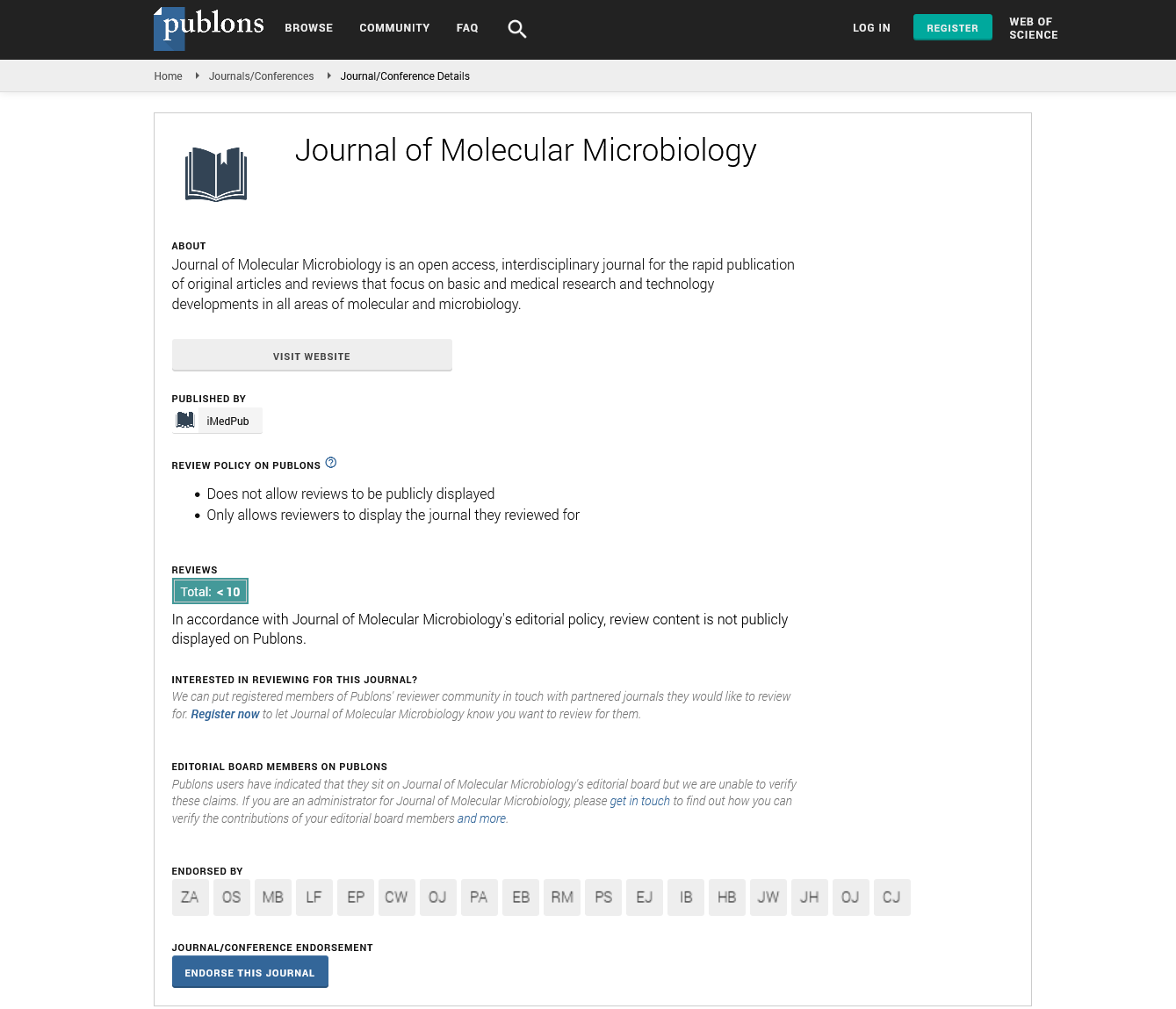Abstract
Discovery of anti-MRSA protein from mangrove-derived Streptomyces pluripotens MUSC 135T
Introduction: The emergence of multidrug resistant bacteria or “super bug” has called on the scientific community to search for more potent, effective drugs to keep these pathogens under control. At the forefront of the production of bioactive metabolites, microorganisms have been recognized as “mini-factories” which are capable of synthesizing interesting bioactive natural compounds with reasonable cost. Under the family of Actinobacteria, the genus Streptomyces stands out in terms of manufacturing bioactive metabolites reserves, contributing over 10,000 bioactive compounds with high pharmaceutical values. In fact, the discovery of antibiotic streptomycin from soil bacterium, Streptomyces griseus has bestowed Professor Waksman and his team with the award of the Nobel Prize in Physiology or Medicine in 1952. In continuing the fight against deadly infections, the search novel Streptomyces-derived bioactive compound is further bolstered with the numerous beneficial implications behind. The mangrove forest is termed as the intertidal region located between the land and the sea. Despite the constant exposure to harsh conditions, some Actinobacteria isolated from these ecosystems have exhibited interesting bioactivities, including anti-MRSA, antifungal and so on. Streptomyces pluripotens MUSC 135T was isolated as novel species from the poorly explored mangrove sediment (East Coast, Peninsular Malaysia). As an attempt to study the bioactive potential of this strain, MUSC 135T was subjected to fermentation before conducting antibacterial assays using traditional agar well diffusion method and high throughput screening method with 96-well microplates. Intriguely, the inhibition zone of MUSC 135T crude extract against MRSA (10.5 mm) was larger than that of the positive control, a Vancomycin disc (30 µg), which exhibited an inhibition zone of 9 mm. A deeper investigation using next generation sequencing has revealed some fascinating bioactive potential of strain MUSC 135T (NCBI accession: CP021080.1); a total of 4 biosynthetic gene clusters related to production of bacteriocin has been identified from MUSC 135T with genome size of 7.34 Mbps using bioinformatics tool BAGEL4. Among these cluster, one of them was predicted to be responsible for he production of Linear Azol(in)e-containing Peptides (LAPs), a group of bioactive metabolites which have been reported for anti-MRSA activities. Subsequently, one of the predicted genes was selected for expression study using E. coli model and the purified protein (Protein135_#1) was then used for anti-MRSA screening. Preliminary anti-MRSA screening has revealed significant reduction of MRSA after the treatment of Protein135_#1. In conclusion, these findings highlight the importance in novel strain from underexplored area, like mangrove forest, particularly in the search of useful bioactive compounds.
Author(s): Learn-Han Lee
Abstract | PDF
Share This Article
Google Scholar citation report
Citations : 86
Journal of Molecular Microbiology received 86 citations as per Google Scholar report
Journal of Molecular Microbiology peer review process verified at publons
Abstracted/Indexed in
- Google Scholar
- Publons
Open Access Journals
- Aquaculture & Veterinary Science
- Chemistry & Chemical Sciences
- Clinical Sciences
- Engineering
- General Science
- Genetics & Molecular Biology
- Health Care & Nursing
- Immunology & Microbiology
- Materials Science
- Mathematics & Physics
- Medical Sciences
- Neurology & Psychiatry
- Oncology & Cancer Science
- Pharmaceutical Sciences
